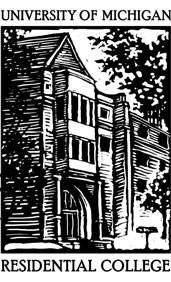On the trip from Petersburg to Vytegra we experienced the
transition from center to periphery through the windows of an old creaky bus.
Initially the shifts in landscape came quite quickly as we rapidly transitioned
from Petersburg, to Leningrad (outer Petersburg / Soviet era apartment blocks),
to the beginnings of the countryside. While we were prepared for it, many of us
were struck by the abrupt change from city to country that took place on the
border of Petersburg. As one student (Dennis) said “you could have a Leningrad
apartment, with a provincial view”.
Once in the
country, the view from the bus window remained much the same for miles and
miles. If you removed the nuanced distinctions in buildings, vehicles, and
signage, the road out of Petersburg felt like it could have been in northern
Michigan. Having spent a large part of my childhood “up north”, I found a
certain comfort came with the view.
Small
pockets of houses came and went, with various lone buildings spread sparsely in
between as we made our way the Alexander Svirsky Monastery. I had known from
our class discussions that this was an important monastery. Yet I missed the
significant detail that this was not just any monastery, but the holiest site
in all of Russian Orthodoxy. Its significance is due to the appearance of the
Holy Trinity to Alexander Svirsky, this being only the second time they have
appeared to man. The implication of this began to sink in as we walked onto the
grounds of the monastery: this is
holy land. I was initially, and through the course of our visit, struck by the
modest humility of this place. I have visited other places of religious
importance such as Notre Dame, and St. Peters. Those were intense in a grand,
and spectacular way, but the Svirsky Monastery’s stark simplicity was a sharp
contrast to its religious significance. To me this contrast only served to
heighten the intensity of our visit. I did find it interesting that the holiest
place in Russian Orthodoxy had only about twenty monks in residence. Is this
function of the decline in monastic life in general in Russia? Or does this
have to do with the monastery still healing from the trauma wrought upon it
during the Soviet era? While at the monastery, a group of professional singers
from Moscow performed two songs for us. The cliché “you had to be there”
immediately comes to mind as I reflect upon this performance. I don’t think any
of us was prepared for the intensity, or the power with which these five men
sang.
Leaving the
monastery with a new respect for the orthodox religion, we boarded our bus to
finish the trip to Vytegra. We experienced our final transition from center to
periphery after leaving the monastery and crossing the border between Leningrad
and Vologda Oblasts. Almost immediately the road went from paved to a bumpy,
slippery, and unpaved one. We rattled and bumped our way along for the next few
hours, only stopping when our bus briefly broke down to the rapid drop in
temperature. Our capable drivers quickly fixed the bus, and we finished the
journey to Vytegra.


No comments:
Post a Comment